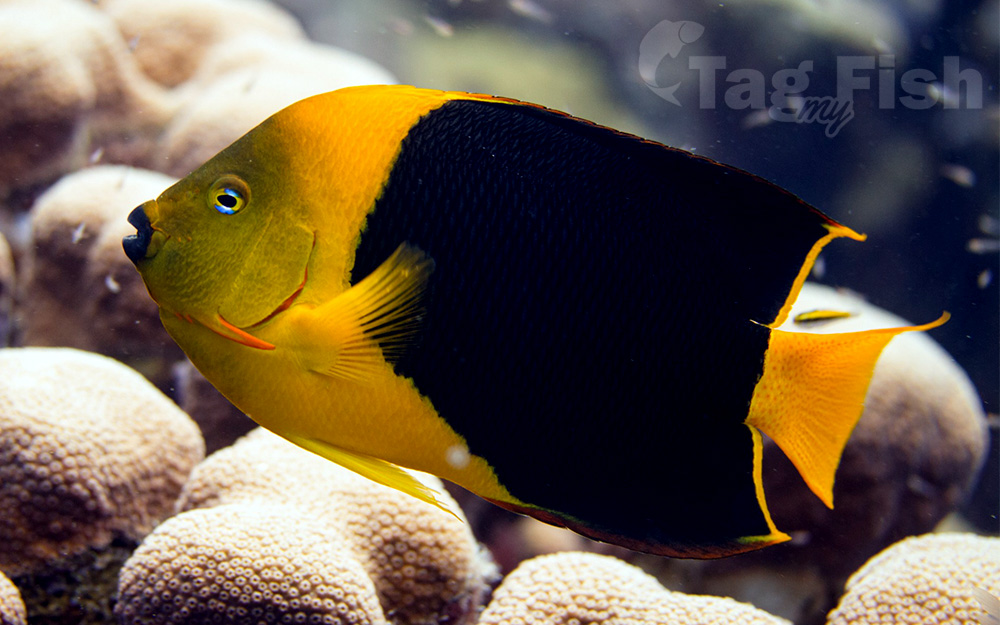Rock beauty
(Holacanthus tricolor)

Classification
General data
The rock beauty has an deep oval and strongly compressed body, with a short snout, ending in a small mouth equipped with bristle-like teeth. There is a large spine in the angle of the preopercle which has a serrated vertical edge. The bone lying between the preopercle and gill cover has 1-4 large spines.
The juveniles are yellowish on their body and fins, with a blue margined black spot on the upper posterior part of the body. As they mature into adults the spot grows, eventually covering most of the body and the lower part of the dorsal fin and the upper part of then anal fin. The head and anterior quarter of the body are yellow, as are the pectoral, pelvic and caudal fins. The mouth is purple. The front edge of the anal fin and margin of operculum are orange. In the eye there is vivid blue on the upper and lower portions of the iris. In the dorsal fin there are 14 spines and 17-19 soft rays while the anal fin contains 3 spines and 18-20 soft rays.
This species attains a maximum total length of 30 centimetres (12 in).
The rock beauty is found in the Western Atlantic Ocean where it ranges from Bermuda and the waters off Georgia and Florida in southwards through the Caribbean Sea and along the coasts of South America as far as Rio de Janeiro.
It is uncommon and localised in the Gulf of Mexico where it only occurs at the Flower Gardens Banks off Texas and off Veracruz and on the Campeche Bank in Mexico.











